Class 3: Sculpture/Ornament/Decoration
1/9
There's no tags or description
Looks like no tags are added yet.
Name | Mastery | Learn | Test | Matching | Spaced |
|---|
No study sessions yet.
10 Terms
Michael Baxandall, 'Material' (5)
Limewood
From the limetree
Cultural significance
The limetree was an object of magico-religious interest
E.g. festal associations & association w/ folkloric practices
Physical qualities lend itself to carving
(1) Soft, yielding, fine-grained = allows for carving of precise details
(2) Uniform (thinness of cell walls)
(3) Lightweight
Disadvantages
(1) Wood generally shrinks over time due to loss of moisture
Continual process (‘slow-motion mobiles’)
Uneven shrinkage = cracking
(2) Limewood splits rather than warps
Due to lightness & thin walls
Materials actively shape artistic practices
Chiromancy ⭐
Reading the inner character of a person/thing from its external character (similar to reading the lines on a hand)
Skillful sculptors used this to circumvent disadvantages of limewood
Art-making as underpinned by social, economical, & cultural dictates ⭐
E.g. Limewood was relatively expensive & sought-after; a sculptor might have to mobilise a powerful patron to help him procure limewood
Materials actively shape form (hollowing of wood, presence of ground & paint)
(1) Shrinking/splitting of wood = removal of inner part of wood
Formed a hollow shell
Back face would be cut away too (could be used for other projects) = ‘C’ shape
Shaped how such objects were displayed (usually in retable niches/on walls)
Without knowing what the material is, you wouldn’t meaningfully know the reason behind the sculpture’s shape
(2) Presence of ground & paint affects amount of detail that had to be carved
If painted: fine details added only AFTER painting (texture achieved through paint)
If unpainted: fine de
tails added during carving itself, before glazing w/ brown tint (texture achieved through carving)
Materials actively shape meaning
Material properties (e.g. texture, colour) contribute to overall aesthetic & emotional impact
Were the objects seen today intended to be seen as such?
Paint on sculptures tends to rub off over time = few polychrome (wooden) sculptures survive today
BUT we may be able to differentiate based on the amount of detail in the carving
E.g. whether details were designed to carry & penetrate ground & pigment OR be immediately present through a glaze
Similarly: in classical marble sculptures
Alex Potts, 'The Sculptural Imagination' (3)
Sculpture as plastic figure --> object --> arena of encounter
Late 18th-19th century: plastic figure
Autonomous, self-sufficient, free-standing entities
One-on-one communion w/ a work that still took place in a public arena
20th century (ealy Modernism): objects
Object-like > figure-like = conferred a more convincing sense of autonomy to the sculpture, rather than masquerading as a human subjectivity
Minimalism: gave generous space to sculptures = could invite a more focused viewing vs. an everyday object, WITHOUT having to offer a striking/complex form
21st century (contemporary): arena of encounter
Sculpture dealing in spaces, environments, & assemblages of objects RATHER THAN object-focused
The structuring of sculpture is partly defined through the viewer's physical encounter w/ it, and can no longer be located entirely in its form
Our viewing experiences of sculpture are inherently unstable
Stereoscopic vision
Our sense of the work as a whole is defined through our partial views of it
Can never be condensed in a single stable image
Vs. painting: we can shift attention from detail to detail without having to change position
Heightened sense of temporality
We linger & move around, becoming conscious of viewing as a process unfolding over time
Assumptions about painting vs. sculpture
Both are granted similar statuses as autonomous entities
BUT in practice, sculptures are often installed more decoratively/are partly integrated into the museum’s interior architecture
The categorisation is NOT always clear-cut
Donald Judd: the idea of an artwork that is ‘neither painting nor sculpture’
Assumptions about painting:
Attached to a wall
2-dimensional/flat surface
Assumptions about sculpture:
Free-standing, away from the wall
3-dimensional, can be viewed from all angles
Enduring, determinate, self-contained form
Andrew Morrall, 'Ornament as Evidence'
The lines between ornament & sculpture are artificial & blurred
Basically the same thing
We simply place artificial distinctions (e.g. hierarchies) on them, and we should be self-aware of this
Results in art historical focus on the form of sculptures, NOT their function/place within society
Habitus:
A set of patterns of thought, habits, values, behaviour and tastes
Acquired/internalised from one’s social environment
Ornament as a physical habitus of one's identity
Could be used to project:
A social identity
A civil/domestic ideal
A religious/ethical aspect of oneself
People literally surrounded themselves w/ decorative objects that reflected who they were/wanted to be
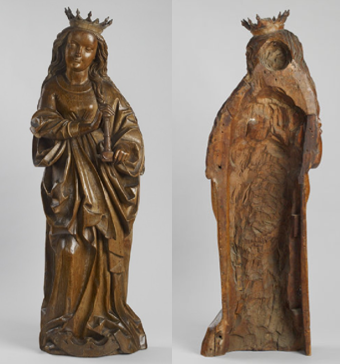
Title & Artist
St Catherine (1520), workshop of probably Master of the Oertel Madonna

The Walking Man (modeled before 1900, cast before 1914), Auguste Rodin
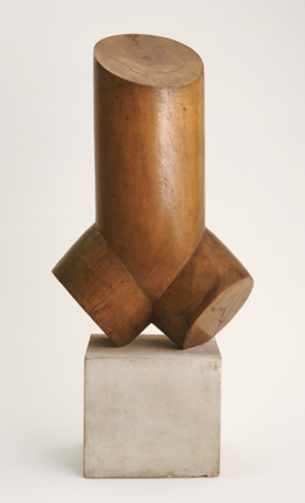
Torso of a Young Man (1917-1922), Constantin Brancusi
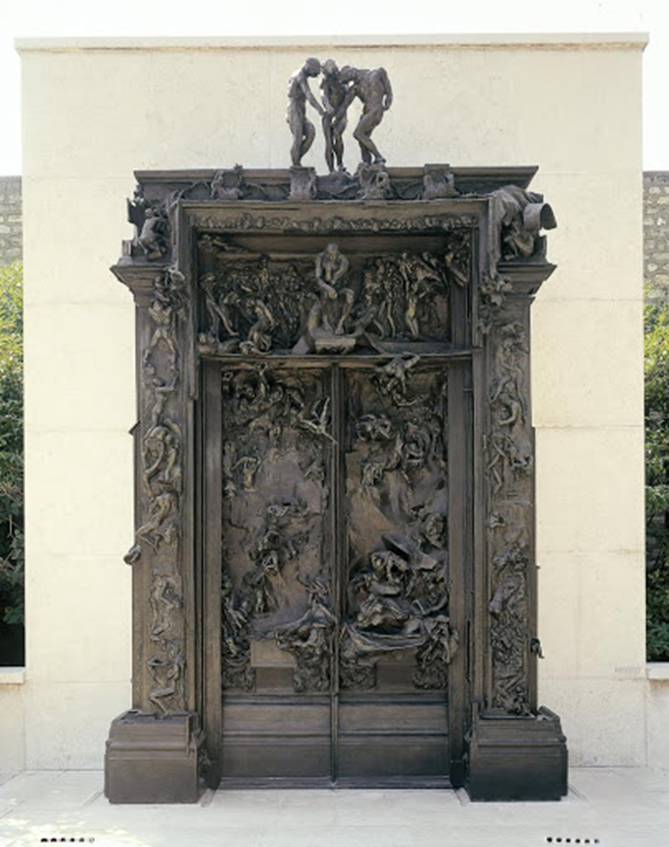
Historical context
Interpretation (2)
The Gates of Hell (started in 1880), Auguste Rodin
Historical context
Cast by the French state after Rodin died, in multiples
When Rodin died he left the French nation his entire estate
All the work in his possession
All the rights of its reproduction
Interpretation
Questions of authorship
Who is the author? Is there a singular author?
Could link Rodin to earlier patterns of production & distribution
Questions of originality
Is this work a fake?

(2)
River Form (1965), Barbara Hepworth (wood), (bronze)
Different versions w/ diff. materials
American walnut
Natural, organic material
Hand-carved from 1 big piece
Need to have a greater sensitivity to material qualities
More unique
You cannot make the exact same sculpture twice
Wood would crack differently, size of trunk would be diff. etc.
Cracks in wood left visible
Displayed in an indoor gallery (Ashmolean Museum)
A space specifically made for contemplation of art
Placed on a pedestal, w/ a barrier rope around it
Photography NOT allowed
Assertive, autonomous presence
Pushing for a phenomenological encounter: move around it
Idea of a sculpture as static, untouchable & unchanging
Bronze
Man-made material (bronze is an alloy, not naturally-occuring)
Recast & reproduced
Displayed outdoors in the Barbara Hepworth Museum & Sculpture Garden
Where natural conditions are going to change it
Reverses the assumption that the statue is exactly replicable
Politics of spectatorship: depends on where & how we view objects
E.g. when placed outside vs. inside a museum
Different statuses; deserving of different amounts/kinds of attention
Walter Benjamin: ‘aura’ of the artwork
Becomes ornamental when placed in an outdoor/garden space
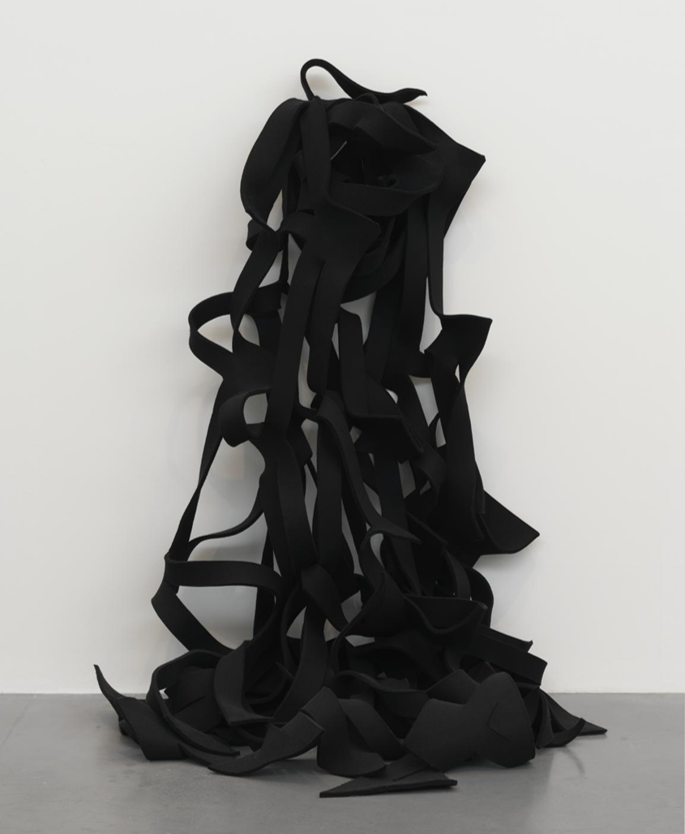
Material
Display
Untitled (1967-8), Robert Morris
Material: industrial felt
Affected by gravity
Vs. solidity & weight of traditional sculpture (enduring, determinate form)
Anthropomorphic dimension: skin-like qualities
Display: set/hooked against a wall
Grounded to floor yet ALSO the wall
NOT on a plinth
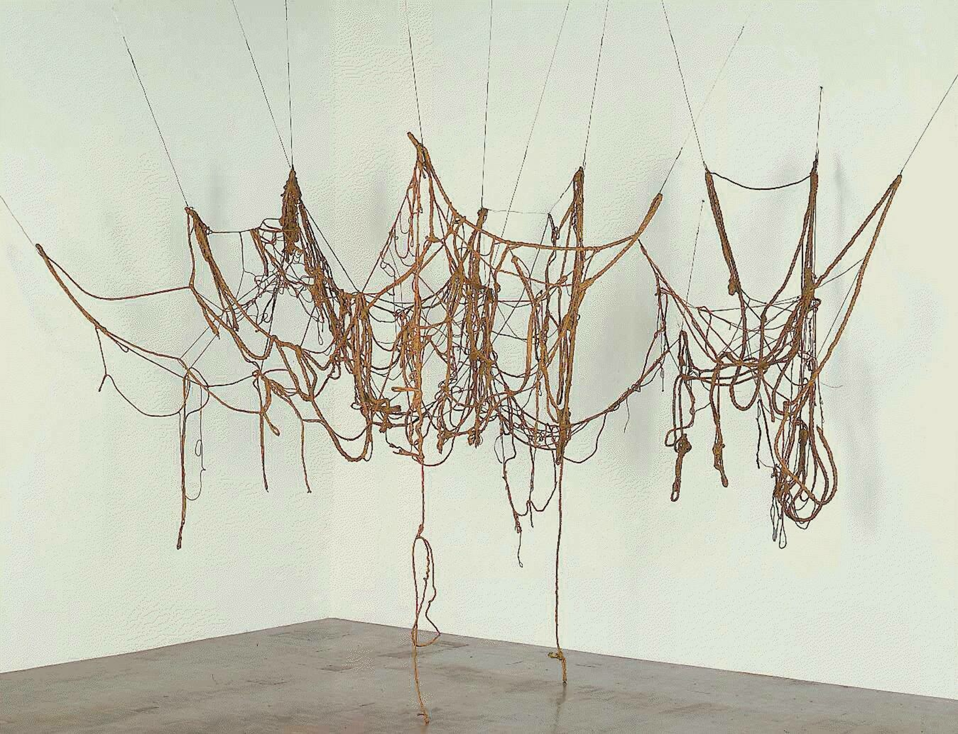
No title (1969-70), Eva Hesse
2 separate pieces of knotted rope dipped into liquid latex
Rope then hardened
= organic & flexible yet solid & weighty; yet fragile & delicate
Ropes attach to the ceiling and walls in 13 points
BUT these placements are flexible to allow for variable installations
Irregular, organic forms
The way its installed always varies
Challenges assumptions of sculpture as enduring, determinate forms
Challenges rigid geometries of minimalist culture
What’s to be gained by seeing it as an ornament vs sculpture?